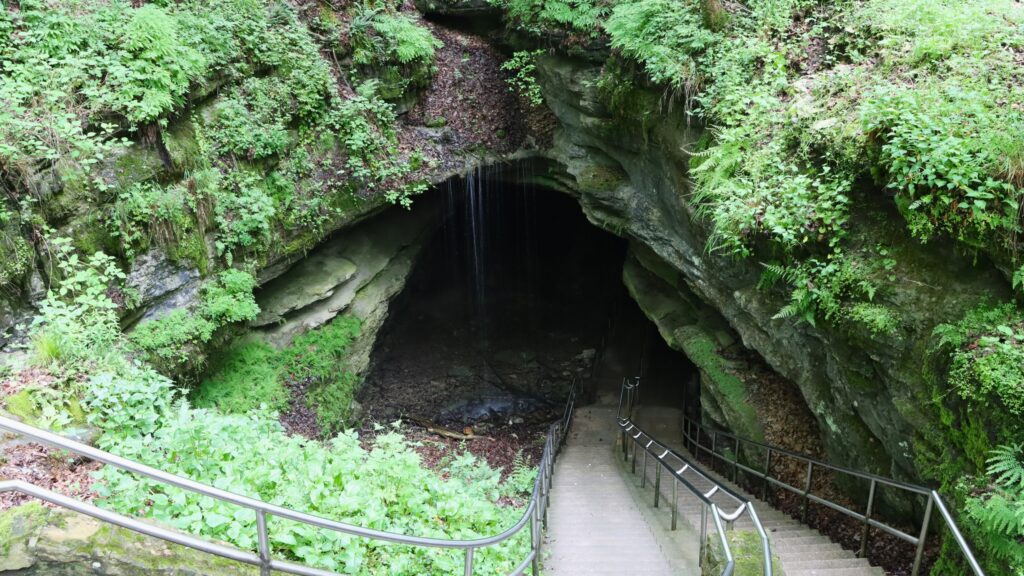Mammoth Cave National Park is an incredible natural wonder in the central part of Kentucky. This park is home to the longest passageways of any cave system on earth, over 400 miles long. Known for its lush biodiversity and scenic views, it has been a popular destination among travelers from all around the world.
History of Mammoth Cave
Mammoth Cave has a long and intriguing history that spans thousands of years — even before fanny packs were cool. This is where the Indigenous peoples used to find resources and seek sanctuary. By the early 19th century, it had begun to draw adventurers and explorers as a hub for tourism. This area was critical during the War of 1812, as it was utilized for collecting saltpeter to produce gunpowder. It was established as a national park in 1941 and has remained so despite significant exceptions.
Geological Features
Mammoth Cave showcases stunning geological formations. The limestone in the walls of caves, worn away by countless years from water and survived, all form an impressive underground landscape. There are huge stalagmites paired with fiddly little ones, too. The cave is impressive, filled with vast chambers such as the Great Room and Rotunda. Story of Earth—Every formation itself is a book that tells how time built our planet.
Biodiversity
The park has abundant plant and animal life. More than 1,000 species of plants grow in the forests and meadows within the park. It is also home to numerous species of living creatures who call Mammoth Cave their habitat. The island attracts deer regionally, coyotes, and birds of many kinds. It also hosts unique wildlife, such as the Indiana bat and other invertebrates.
Outdoor Activities
Mammoth Cave National Park offers many activities that visitors can enjoy in the midst of nature. Various trails crisscross the park, making hiking one of the most popular activities. The trails range from easy ambles to strenuous hikes. Guided tours are offered for a closer look at the cave and its geology, history, and wildlife.
Kayaking and Canoeing on the Green River provide a different perspective of the park. Fans of fishing can also cast a line in the park’s streams and rivers. There are many places in the park where you can lose yourself with your camera — plus ideal spots for picnicking and camping.
Guided Cave Tours
The cave offers guided tours to suit a wide range of interests and abilities. The Historic Tour highlights the cave’s history and includes many of its most famous formations. The Domes and Dripstones Tour highlights interesting geological formations featuring stunning stalactites and stalagmites. For a more daring outing, the two-hour Wild Cave Tour offers an opportunity to get dirty and adventurous while dropping in alongside stripped-down guides who creep along rarely-visited passages.
During the busy season, tours tend to sell out, so it is wise to book in advance. All tours are led by expert guides who also narrate excellent history and geography tales of the cave. Visitors of all ages can find a tour that suits their preferences.
Conservation Efforts
Mammoth Cave National Park must be protected for future generations. It is involved in conservation activities to preserve its ecosystem and wildlife. The condition within the cave is under ranger control, and rangers make sure no one spoils something that has stood for thousands of years. Educational programs promote the conservation of natural resources.
Managing invasive species is also a priority, as plants from elsewhere can upset the balance of ecosystems. The park is also supported by a large group of volunteers who help with cleaning and restoring it. Responsible visitors can also participate in conservation.
Visitor Information
Millions of people visit Mammoth Cave National Park annually. Travelers should also stop by the park visitor center, which offers maps and brochures as well as information on available tours. If you plan on staying overnight, be sure to visit the visitor’s center and stop by one of the many restrooms, picnic areas, or campgrounds.
Though open year-round, spring and fall are the best seasons to visit. These are usually moderate-temperature seasons, and nature paints an amazing leaf view. In summer, the weather can get hot and humid; in winter, snow occurs only occasionally with cold temperatures.

